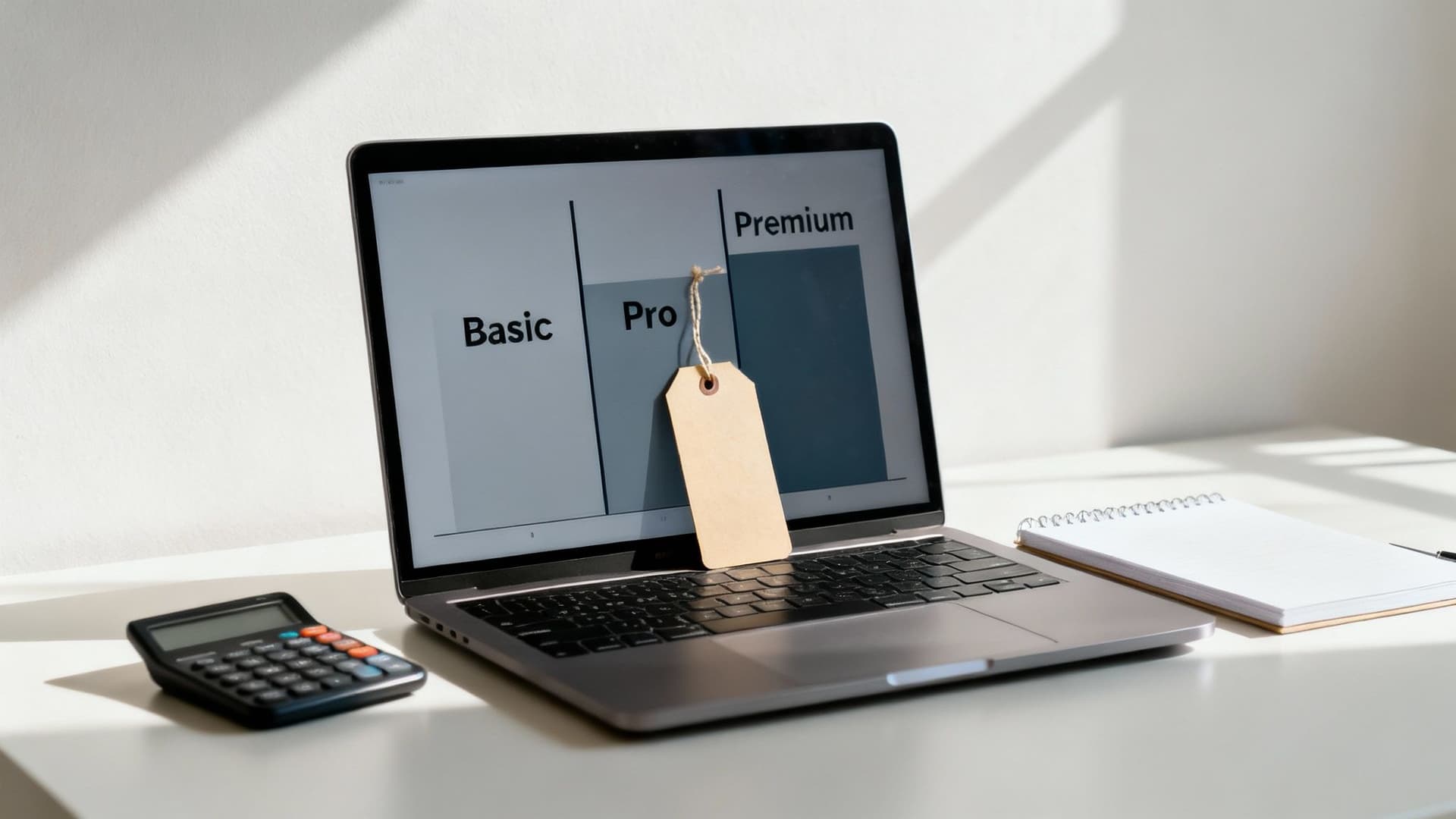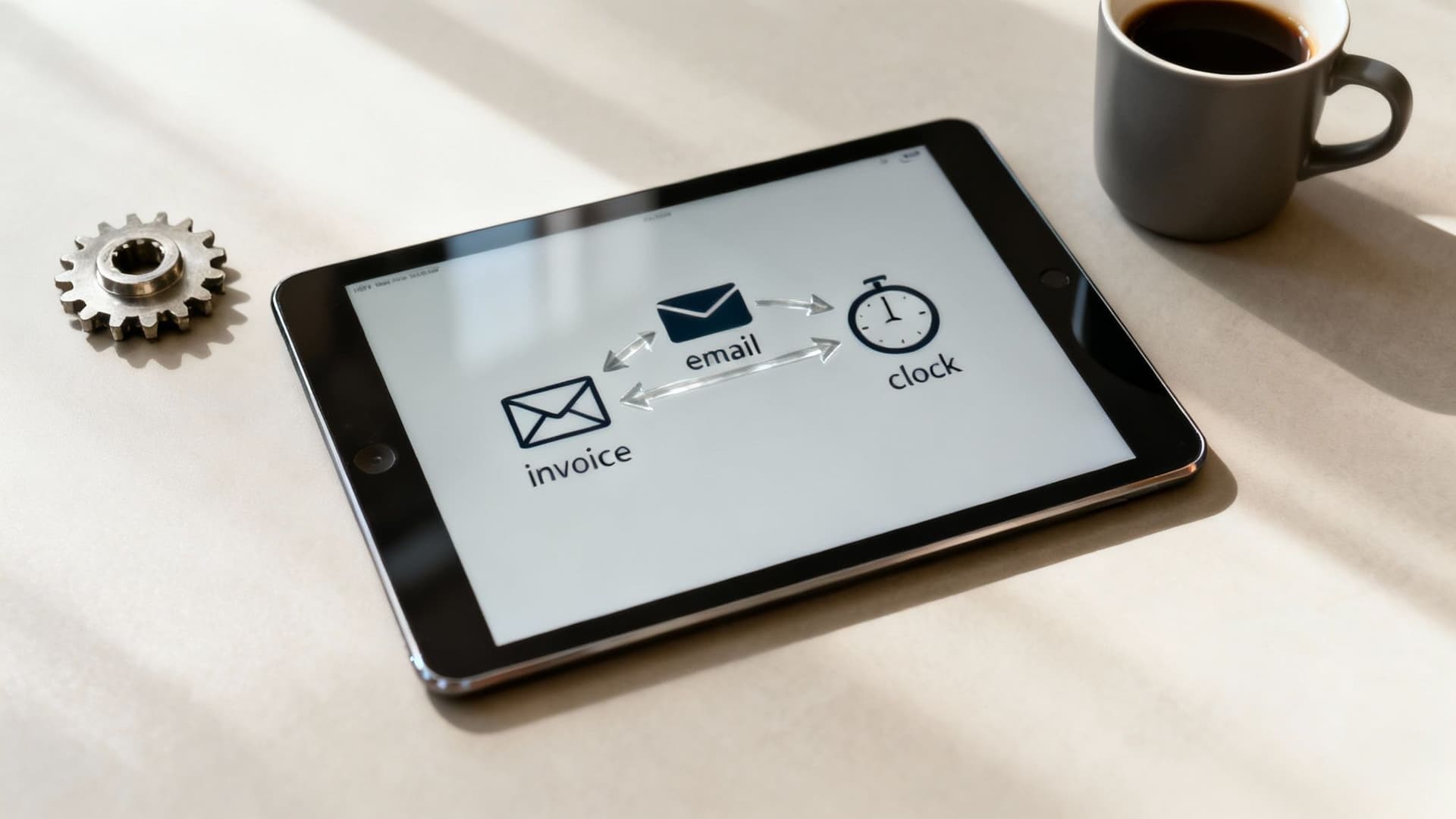Learn how to improve profit margins with actionable pricing, cost control, and efficiency tips to boost your bottom line.
October 29, 2025 (7d ago)
how to improve profit margins: Quick, Practical Guide
Learn how to improve profit margins with actionable pricing, cost control, and efficiency tips to boost your bottom line.
← Back to blog
Improve Profit Margins: Quick Practical Guide
Summary: Actionable pricing, cost-control, and automation tactics to boost profit margins and sustain growth.
Introduction
Learn how to improve profit margins with practical pricing, disciplined cost control, and smart automation. This guide focuses on three core levers—pricing, cost management, and operational efficiency—to help you capture more profit from every sale and build a more resilient business.
Your Foundation for Higher Profit Margins

If you want higher profit margins, concentrate on three practical areas: how you price offerings, where you spend money, and how efficiently your business runs. A smarter mix of value-based pricing, targeted expense cuts, and automation uncovers profit that’s been hiding in plain sight.
The Three Pillars of Profit Margin Improvement
| Strategy Pillar | Primary Focus | Key Actions | Potential Impact |
|---|---|---|---|
| Pricing Strategy | Revenue optimization | Value-based pricing, tiered packages, data-driven price tests | Higher revenue per customer, improved margins |
| Cost Management | Expense reduction | Supplier negotiation, inventory optimization, overlap elimination | Lower COGS, better gross margins |
| Operational Efficiency | Productivity & automation | Workflow automation, systems integration, role clarity | Lower labor costs, faster delivery, fewer errors |
These pillars work together: pricing drives revenue, cost management protects margin, and efficiency scales your gains. Before changing prices, know your financial baseline so you don’t guess—you make strategic moves.
A useful internal tool is the Business Valuation Estimator, which can help model financial scenarios and evaluate whether price and cost changes move the business in the right direction.
Make each sale more valuable, spend less to earn it, and make the process smoother. Small improvements compound into meaningful margin gains.
Master Pricing to Maximize Revenue

Many businesses underprice products and services. Pricing is a signal of value and the most direct lever for margin improvement. Move beyond simple cost-plus and price on the value you deliver to customers.
Shift from Cost-Plus to Value-Based Pricing
Instead of asking, “What did this cost me?” ask, “What result does this create for my customer?” Pricing on outcomes lets you detach revenue from direct input costs and charge for the customer benefit. For example, an agency that prices on qualified leads or revenue growth often earns substantially more than one billing by hours.
Know Your Numbers Before You Change Prices
Don’t change price without data. Model price scenarios using internal financial tools like the Business Valuation Estimator to understand how price moves affect required sales volumes and profitability.
Data removes the guesswork. When you understand breakeven points and margin sensitivity, you can set confident prices that build the profits you need to grow.
Implement Tiered Pricing Structures
Tiered pricing meets different customer needs and nudges buyers toward more profitable options. A clear entry-level plan plus a “most popular” middle tier and a premium offering increases average transaction value and simplifies upsells.
Design tiers so each step is an obvious value upgrade. Many companies that focus on scalable, high-margin offerings have seen net margins improve significantly over time: the S&P 500’s average net margin rose over the last two decades, illustrating how scalable models can lift industry margins1.
Cut Costs Without Hurting Quality
Cutting costs should be surgical. Target hidden waste—duplicate tools, excess inventory, and unnecessary manual work—while protecting the customer experience.
Renegotiate and Optimize Your COGS
Your Cost of Goods Sold matters most for gross margin. Call suppliers, ask for better terms, seek volume discounts, and explore payment incentives. Improve inventory turnover: excess stock ties up cash and increases storage and obsolescence risk.
Consider “just-in-time” practices where feasible, and measure the trade-offs between stockouts and carrying costs.
Conduct an Operational Expense Audit
Treat every expense as an investment. For each line item, ask, “What return does this produce?” Use tools to model returns before cutting important spend.
When marketing, use targeted estimators like the Facebook Ads Cost Estimator or Email List Value Estimator to project return and avoid cutting channels that drive profitable growth.
A quick example: consolidating redundant subscriptions saved an e-commerce business roughly $4,000 a year—direct profit improvement with zero customer impact.
Small fees also add up. Understanding and avoiding chargeback and processing fees protects margins and prevents surprise drains on profit3.
Boost Efficiency with Smart Automation

Inefficiency quietly erodes profit. Automate repetitive tasks—data entry, invoicing, follow-ups—so your team can focus on revenue-generating work.
Pinpoint Your Biggest Time Sinks
Track where staff time goes. Manual invoice generation, repeated data transfers between systems, and manual payroll calculations are common culprits. Use a production or time estimator like the Manufacturing Production Time Estimator to model process time savings and prioritize automation projects.
Automation isn’t just about cost cutting. It frees talented people to do higher-value work that grows revenue.
Implement Practical Automation Solutions
Start small and solve one painful bottleneck at a time. Areas with fast payback include:
- Financial admin: accounting software that automates invoices and reminders improves cash flow
- Customer communication: automated welcome and nurture sequences keep leads warm without manual effort
- Data management: integrations between CRM, email, and accounting systems eliminate rekeying errors
Automation adds consistency and scale, reduces errors, and gives you cleaner data for better decisions.
Tracking Financial Health to Sustain Growth

After pricing, cost cuts, and automation, you need a system to track finances regularly. Habitual review turns one-off fixes into sustained improvement.
Look Beyond Net Profit Margin
Net profit margin is important, but other KPIs reveal the reasons behind changes:
- Gross profit margin: profitability of the core product before operating costs
- Operating profit margin: profit from day-to-day operations
- Customer acquisition cost (CAC): how much it costs to win a customer
- Customer lifetime value (LTV): expected revenue from a customer over time
Compare CAC to LTV to ensure your customer economics are healthy. Use business modeling tools like the Business Valuation Estimator to test scenarios and set realistic financial targets.
Identify True Profit Centers
Not all revenue is equally profitable. Analyze profitability by product, service, and client. You may find high-maintenance clients are low-margin, or that a low-priced product is a top performer because of volume and low COGS.
Use those insights to shift marketing spend, reprice offerings, upsell where it’s profitable, and retire underperforming services.
Establish a Rhythm for Reviews
Set a cadence—weekly, monthly, or quarterly—to review your financial dashboard. Early detection of rising CACs or slipping margins lets you fix problems before they become crises. Regular reviews make financial management proactive instead of reactive.
Common Questions About Improving Profit Margins
How quickly will I see margin improvements?
Some changes show up immediately—small price increases or canceled unused subscriptions appear in the next report. Bigger structural moves—supplier renegotiation, automation rollout—typically take one to two quarters to fully materialize.
Will cutting costs reduce quality?
Not if you cut intelligently. Focus on behind-the-scenes waste and redundant spend. Ask, “Will this harm the customer experience?” If yes, don’t cut it.
How do I raise prices when competitors are cheaper?
Shift the conversation from price to value. Highlight what makes you different—quality, service, speed—and offer tiered pricing so budget buyers still have options while higher-value customers pay for premium features.
Quick Q&A
Q: What’s the single best first step to improve margins?
A: Run a quick expense audit to find redundant subscriptions and negotiate COGS—those moves are low-effort and often high-impact.
Q: How should I prioritize automation projects?
A: Start with tasks that consume the most time and create costly errors—invoice generation, manual data entry, and routine customer follow-ups.
Q: Which internal tools help model changes?
A: Use the Business Valuation Estimator and the Manufacturing Production Time Estimator to test price, cost, and efficiency scenarios.
Ready to stop guessing and start making data-driven decisions to boost profitability? Use tools like the Business Valuation Estimator to model changes and turn your site into a profit-improving resource for your team and customers.
Ready to Build Your Own Tools for Free?
Join hundreds of businesses already using custom estimation tools to increase profits and win more clients